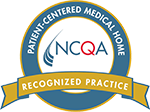How to Tell the Difference Between RSV, COVID-19, and the Flu
After two years of managing our lives around the COVID-19 pandemic, it has been easy to forget that other viruses like RSV and the flu can still get passed around. While social distancing and mask-wearing have decreased the transmission of these other viruses, we are now starting to see a resurgence as restrictions continue to relax.
What is RSV?
According to the Centers for Disease Control, an estimated 58,000 children younger than five years old are hospitalized each year in the United States with an RSV infection. Nearly every child comes down with an RSV infection at some point, usually before they reach the age of two. It only causes a mild cold for most, but it can turn serious.
This common virus is highly contagious, and it’s spread through contact with others who already have it. It can infect anyone, but young children (especially premature infants) and the elderly are more susceptible to complications. Symptoms start anywhere from 2 to 5 days after initial contact, and they can look a lot like COVID-19.
Common RSV, COVID-19, and Flu Symptoms
Unfortunately, COVID-19, RSV, and the flu share quite a few similarities in symptoms since each is a respiratory illness. All three can look like a cold in the beginning and exhibit the following within a few days after contact:
- Runny nose
- Fever
- Cough
- Congestion
- Strained breathing
- Decreased Appetite
- Fatigue
So, how do you tell the difference between these highly common and contagious illnesses? The bad news is, you can’t without a test. In the past, these types of infections would be more prevalent during the winter months, when people would be more likely to spend increased time together in enclosed spaces.
However, studies show that RSV cases are also occurring in the spring and summer months, as distancing restrictions relax. This presents a complicated situation when diagnosing the source of your child’s sniffles. Is it COVID… or not?
How to Diagnose and Prevent Infection
If your child is showing signs of a respiratory illness, make sure you get a diagnosis as soon as you can–that way, you can let your daycare, school, or other parents know. Your pediatrician can give your child painless nasal swab tests for RSV and COVID-19, so you can stay safe and prevent the spread of these viruses. RSV typically clears up in most children without complication, but you’ll want to be aware and careful that it doesn’t progress into something worse—like bronchiolitis or pneumonia.
If there is a previous history of asthma, the use of breathing treatments, or hospitalizations due to respiratory illness talk to your pediatrician about it.
Prevention of infection is the best thing you can do as a parent. If your child has already received vaccinations for the flu and COVID-19, you’re already doing a great job! It is possible to become infected with more than one virus simultaneously, so eliminating your child’s risk of the flu and COVID (if they are eligible) can help.
Otherwise, be sure to practice proper hygiene. If someone you know is exhibiting symptoms of a respiratory illness, be sure to distance yourself and your kids to prevent the spread of RSV and other viruses. Continued social distancing and mask-wearing (in general) can also help your child stay healthy.
Please contact us or book an appointment right away if your child has respiratory symptoms, and you can also access at-home COVID-19 tests online.








